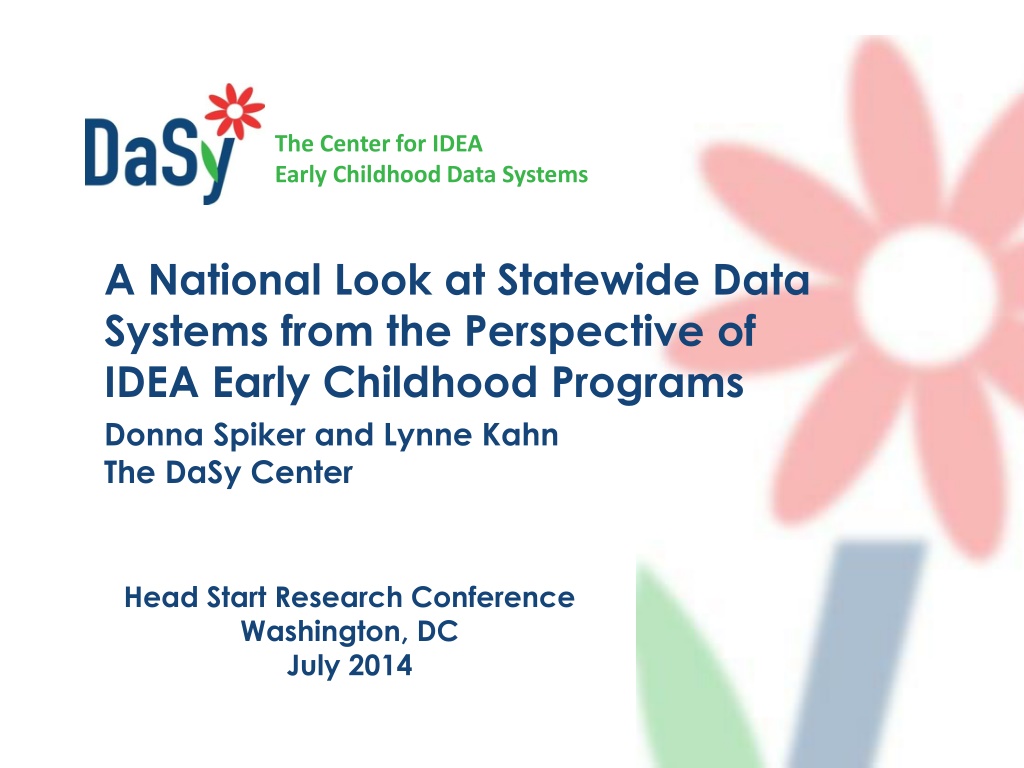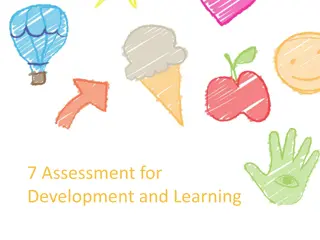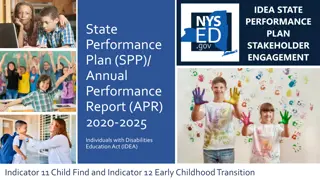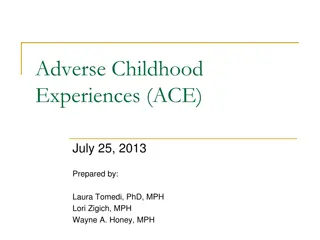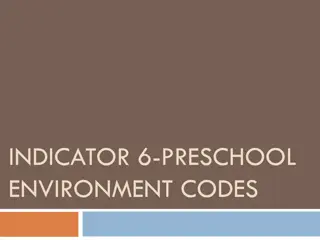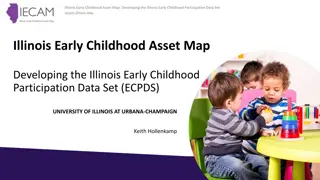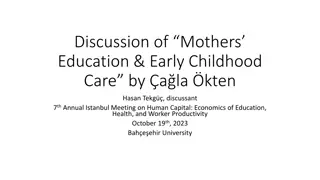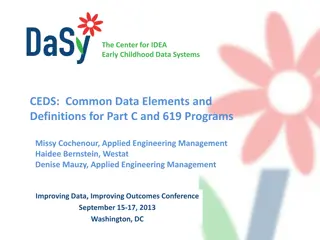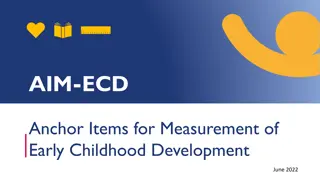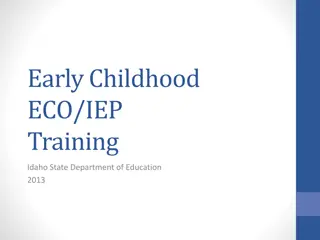Analysis of Early Childhood Data Systems in IDEA Programs
An examination of statewide data systems in IDEA Early Childhood Programs was conducted through surveys and assessments. The study reveals the methods used, questions asked, respondent details, and key results regarding the data systems, workforce, and data elements present in Part C and 619 programs. Variances across states are highlighted, emphasizing the importance of comprehensive data collection to support early childhood interventions.
Download Presentation

Please find below an Image/Link to download the presentation.
The content on the website is provided AS IS for your information and personal use only. It may not be sold, licensed, or shared on other websites without obtaining consent from the author. Download presentation by click this link. If you encounter any issues during the download, it is possible that the publisher has removed the file from their server.
E N D
Presentation Transcript
The Center for IDEA Early Childhood Data Systems A National Look at Statewide Data Systems from the Perspective of IDEA Early Childhood Programs Donna Spiker and Lynne Kahn The DaSy Center Head Start Research Conference Washington, DC July 2014
What methods were used? Online needs assessment developed by DaSy workgroup Coordinated with ITCA and ECDC surveys Sent to Part C (EI) and 619 (ECSE) coordinators Completed with data managers and others identified by coordinators 2
What kinds of questions were asked? Status of Part C and 619 data systems: Data systems and data elements Linkages between different state data systems Data system administration and use of data Note: Slightly different versions for Part C and 619 based on program differences 3
Who were the respondents? Sent to all states and jurisdictions Report of the information collected focuses on information reported by 50 states, DC, and Puerto Rico We had an excellent response rate: For Part C 94% (n = 49) For 619 96% (n = 50) 4
Results: Most Part C and 619 data systems have child-level and workforce data, fewer have local program-level data Part C 619 Child-level 94% 96% Program-level 29% 40% Workforce: EI providers 65% ---- Workforce: special education teachers ---- 83% Workforce: related service providers ---- 71% Workforce: general education teachers ---- 71% 5
Most Part C and 619 data systems have a variety of data elements in their child- level data systems. Some common data elements Part C 619 Child demographics 94% 96% Disability category 77% 96% Eligibility status 98% 90% Child outcomes 83% 90% Service setting 89% 87% ID for program or school 89% 81% Reason for exiting program 98% 79% 6
States vary in the kinds of workforce data they have in state data systems. 619 619 special ed teachers 619 regular ed teachers Workforce data element Part C Therapists Demographics 29% 67% 58% 64% Employment data 54% 77% 60% 67% Education 46% 75% 58% 64% Licenses/certifications 56% 83% 69% 71% Professional development 39% 29% 29% 23% Wages 10% 46% 42% 46% 7
Linkages: Why is this important? States can answer programmatic and policy questions about: Children s outcomes from EI and ECSE participation, e.g.,: Do former EI recipients require special education in kindergarten? How are ECSE graduates doing in third grade? Factors associated with good child outcomes, e.g.,: What workforce and program factors, such as personnel qualifications and program quality, have a substantial impact on child outcomes? Do children served in inclusive programs have better outcomes? 8
Only about one-third of states have linked data across Part C and 619. C and B did not agree, 23% Same system, 15% Linked systems, 14% Not linked, 48% 9
There is infrequent use of common identifiers across Part C and 619. Common identifier for C & 619 Child-level 21% Program-level or school-level 12% Workforce-level 6% 10
Linkages with K12 education data are more common for 619 than for Part C. Types of education data in same system or have been linked Part C 619 K12 special education 41% 87% K12 general education 14% 79% 11
For Part C, few states have linkages with other EC data, and for 619,almost half have linkages with state preK. Types of other EC data Part C 12% 6% 2% 6% 8% 619 46% 22% 10% 8% 8% State pre-K Head Start Early Head Start Child care Home visiting 12
Linkages with health data are more common for Part C than for 619. Types of health data Part C 619 Medicaid/SCHIP EHDI Vital records Birth defects registry All-payer claims (insurance) WIC/SNAP Hospital Behavioral health 12% 8% 0% 2% 42% 37% 21% 21% 13% 8% 6% 4% 0% 6% 2% 2% 13
Only few states have linked Part C or 619 data to social services data. Types of social services data Part C 619 21% 12% 10% 8% Child welfare Foster care Temporary Assistance for Needy Families (TANF) 10% 14% 6% 14% Homeless services 14
